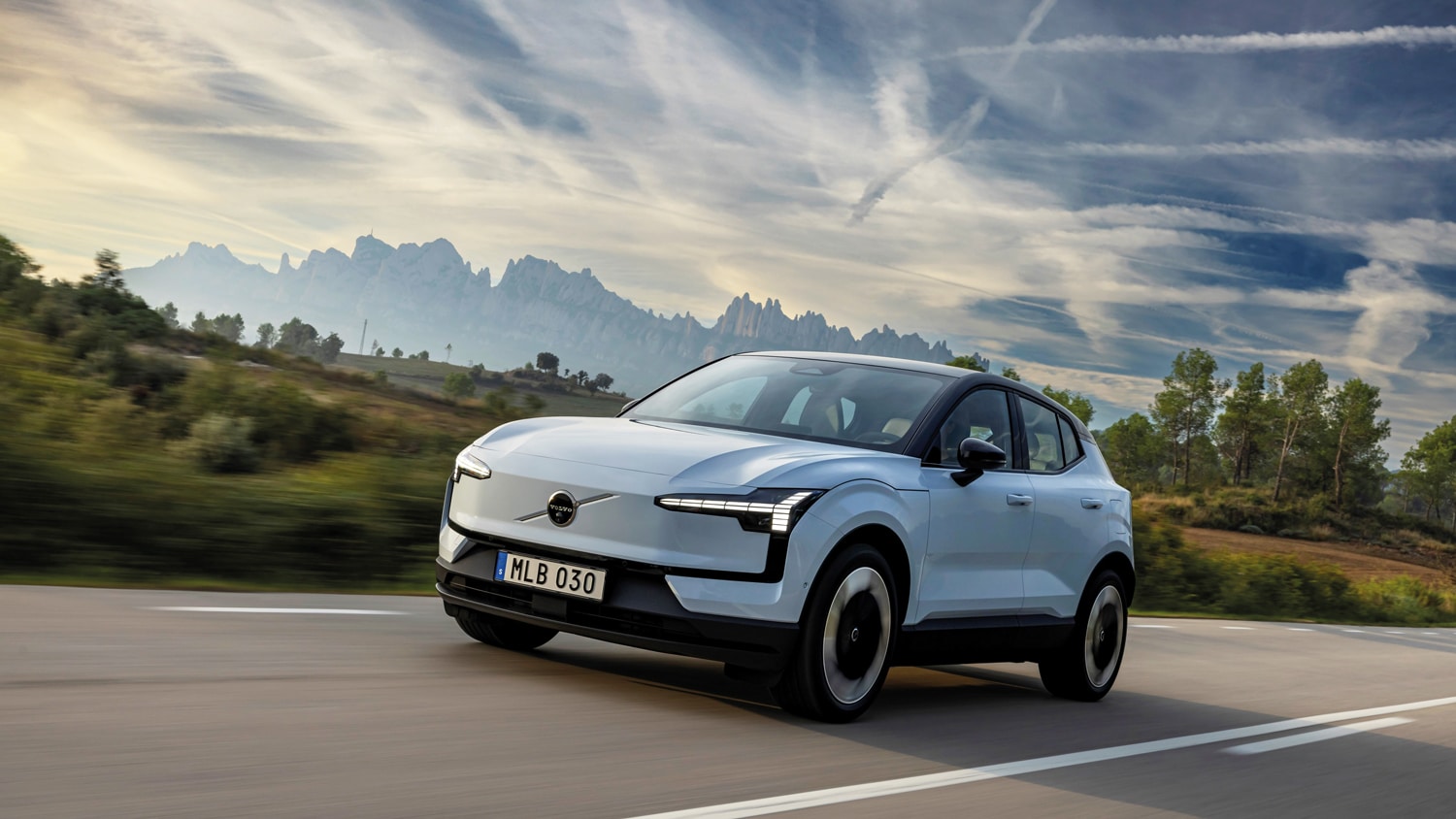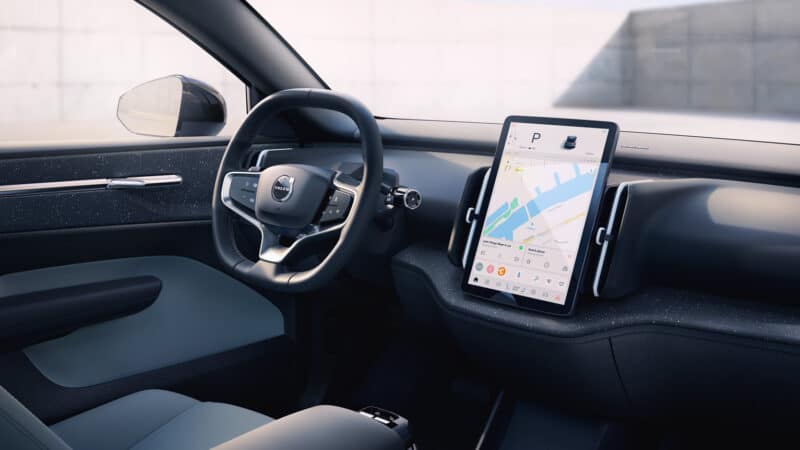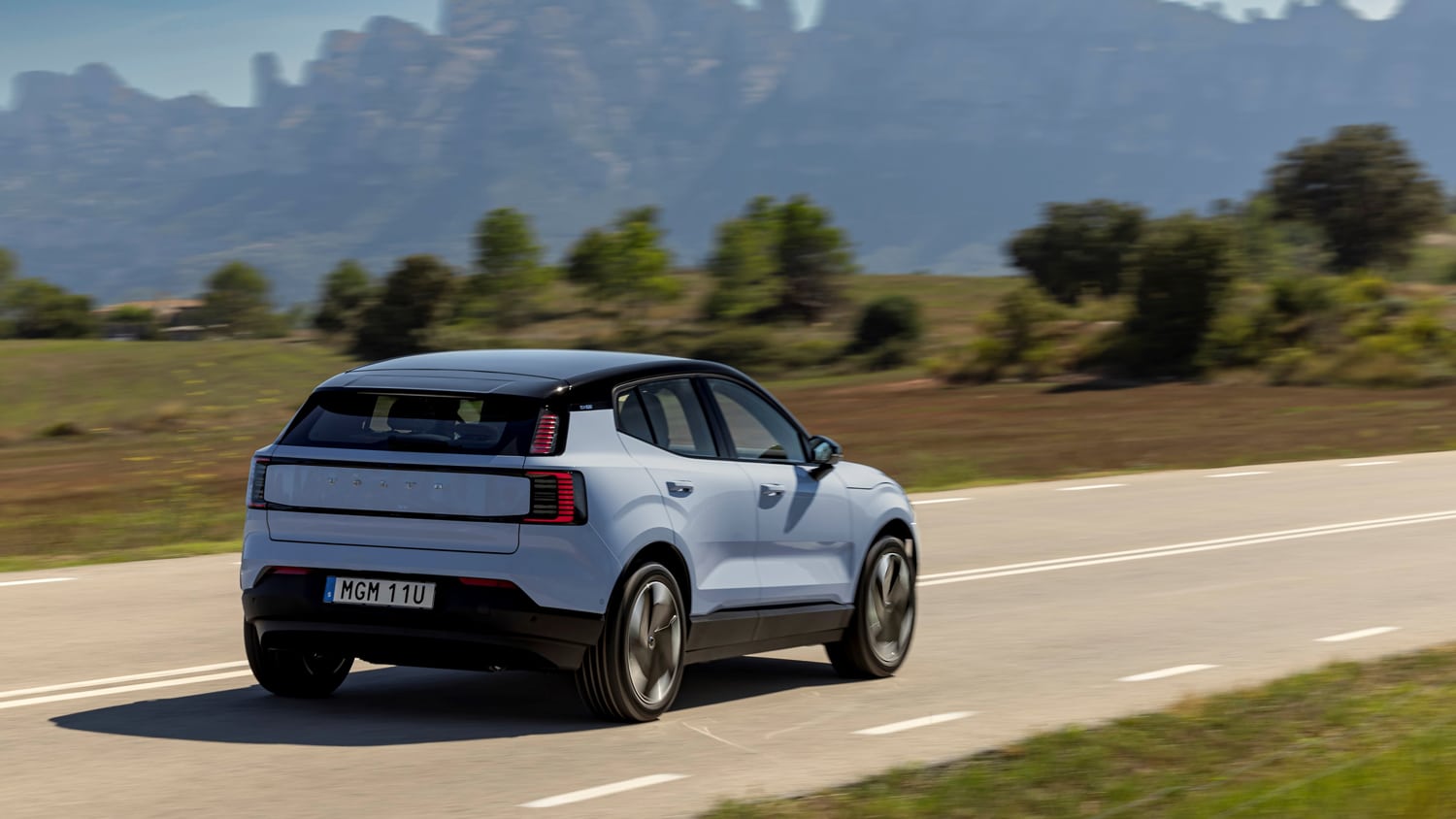2024 Volvo EX30 review: Great engineering with a fundamental flaw
The EX30 is a looker, affordable, a great example of engineering, and should be best in class. But it isn’t, explains Andrew Frankel

Volvo EX30 impressed in 2023
This is the most important new Volvo in years. Decades possibly. At least to Volvo. The EX30 is Volvo’s first crack at the compact crossover EV market, a sector that is likely to come to dominate the sales charts in years to come. More importantly still, if it gets this right the young professionals expected to buy it may stay with the brand for years. Decades possibly. You see point I’m making: sell one now, sell 10 other Volvos later.
First impressions count. I’m no greater judge of looks than you, but I think it looks great. Then the price: the range starts at £33,795, which is £1700 more than the very cheapest electric Vauxhall Corsa. Compared to the class benchmark Volkswagen ID.3, the base EX30 offers 272bhp as opposed to 204bhp for the entry level ID.3 and is £3500 cheaper. Clearly keen to make an impression on a market in which it has no current footprint, Volvo is aiming to create headlines with its pricing strategy.
The car I drove came from the other end of the range, the ‘Twin Motor Performance’ model, complete with all-wheel drive, 422bhp and a 0-62mph time of 3.6sec, the same time I was once quite proud to have squeezed out of a Jaguar XJ220. But it still costs £44,495. Yes that is £1500 more than the most expensive ID.3, but the VW has only two-wheel drive and less than half the power. That said, the Volvo has a quoted range of just 280 miles, the VW some 356, which is worth bearing in mind if doing distances is important.
The news gets better. The EX30’s interior is startlingly uncluttered, light and classy. It feels wholesome, healthy somehow, and very, very Volvo. There’s more space in the back than I was expecting too.
It is of course a strong performer, though you’ll only be given access to full power in its performance mode. But such is the immediacy and strength of its response even the fastest hot hatch on sale – the Mercedes A45 S reviewed elsewhere on these pages, would be hard pressed to keep up with it until well into licence-losing territory. But its greatest strength is its chassis. I can remember lumpen ride quality ruining entire generations of Volvos – the otherwise excellent 850 series and its descendants among them – but the EX30 is exceptional. It’s not absurdly soft and pillowly because that would make it wallow around, instead its wheel movements are just expertly controlled resulting not only in exceptional body control by the admittedly unremarkable standards of this category, but I would say the most comfortable ride too.
“Trebles all round? Not quite, as this car has a fundamental flaw”
Trebles all round? Not quite. For this car has a flaw. Some reviewers see it as so fundamental it represents grounds all by itself to not buy the car. Imagine, if you will, Ronnie O’Sullivan having to play snooker with a floor mop instead of cue, or Usain Bolt lining up for the 100 metres in Doc Martens. ‘Hobbled’ barely begins to cover it. And the most remarkable aspect of it all is that it’s Volvo itself which has done it.
I’ll explain. So keen has Volvo been to create an uncluttered interior it has all but banned buttons. There are switches for the electric windows, the hazard warning lights and that’s about it. There are some haptic pads on the steering wheel which allow you to change volume and set the cruise control, but if you want to do anything else, even something as vital as switching on your fog lights, you’ll have to go via the menus on the central screen.

And here it all falls down: the interior is classy, but the instruments are so poorly located it defies logic
This is also where all the information you need such as, you know, how fast you’re going, is displayed. So if you want to know literally anything, you have to take your eyes off the road. In a Volvo. And, no, there is no option of a head-up display. In this regard it is no worse than a Tesla Model 3, but at least the Tesla doesn’t scold you for taking your eyes off the road to look at information in the only place the Volvo provides it. Because while you have to take your eyes off the road, the Volvo never takes its eyes off you, and if the little black box sees you doing something it is forcing you to do, like see how fast you’re going, it will flash up a little admonition to stop you doing it again. Even the indicator lights are here, far from your natural line of sight, quite small and rather quiet so if you’re playing music you may find it hard to hear them.
The idea of any car forcing you to spend so long doing one of the least safe things a driver can do – i.e. not looking where he or she is going – is bad enough, but that it should be a Volvo, a company that has built its reputation on safety, is little less than shocking. Telling you off for doing it is only adding considerable insult to potential injury.
One reviewer was so incensed he gave the XC30 the same score as the appalling Citroën Ami, and while I don’t agree, I can see where he’s coming from. With a sensible HMI (human machine interface) the XC30 would have been the best car of its kind I have driven. As it is, it’s fine car saddled with a terrible flaw. It’s not bad enough to render all its many strengths null and void, but I’d urge everyone in the market to make sure it’s not a deal breaker. For many, undoubtedly, it will be.
VOLVO EX30

- Price £44,495
- Engine Front and rear electric motors, 69 kWh battery
- Power 422bhp
- Torque 400lb ft
- Weight 1960kg
- Power to weight 215bhp per tonne
- Transmission single-speed automatic, four-wheel drive
- 0-62mph 3.6sec
- Top speed 112mph
- Range 280 miles (WLTP)
- Charging speed 153kW
- Verdict Just why, Volvo? It’s baffling.

